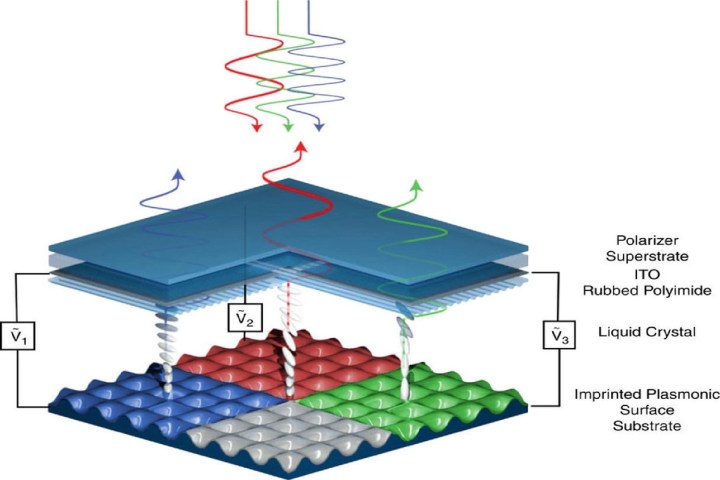
In a new piece of research, published in the journal Nature Communications, they describe a method for tuning the individual subpixels on a display using differing amounts of voltage, allowing it to express multiple colors as a result.
At present, the pixels on an LCD display contains three subpixels, each of which is responsible for displaying either red, green, or blue. Different colors are shown by shining a white light through the pixels and a special shutter controlling which subpixel — or combination of subpixels — is on display.
“This is the first demonstration of a color display based on a single pixel,” Debashis Chanda, lead author of the study, told Digital Trends. “One pixel can tune from red to green to blue, unlike other displays where three pixels are needed, resulting in an unprecedented 200 percent improvement in display resolution. This is accomplished through a surface morphology-induced, polarization-dependent plasmonic resonance, and a combination of bulk and surface liquid crystal effects that manifest at different applied voltages.”
The reason for the massive display resolution increase is because, rather than every subpixel doing just one-third of the job of presenting a full color spectrum, they can each show a full range of colors. The results could be used for everything from television sets to computer displays to, perhaps most significantly, virtual reality headsets — where the pixels are just inches from your eye.
“We showed in [our] Nature Communications paper that we can use standard electronics to make this display work,” Chanda continued. This means that the technology could be incorporated into regular existing LCD devices, as opposed to requiring entirely new hardware.
At present, the researchers are further developing the technology for a potential commercial venture.


